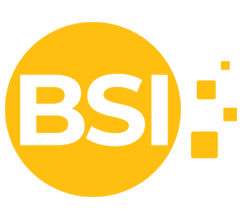The Need of VR in Training

BSI – 20/05/2023
The need for VR in training has significant necessity for the organisation to train the employee in most effective way. In an era where technology is the cornerstone of progress, the way we learn and work is continuously evolving. One innovation that has taken the corporate world by storm is Virtual Reality (VR). More specifically, the use of VR in employee training is reshaping how organizations equip their teams with essential skills.
Traditionally, employee training has been a significant challenge for businesses. It often involves theoretical presentations and manuals that may not adequately prepare employees for the real-world scenarios they’ll face. Furthermore, hands-on training can sometimes be impractical, costly, or even risky, especially in certain sectors.
That’s where Virtual Reality comes in. VR offers an immersive, interactive learning environment where employees can learn by doing. It allows them to make mistakes and learn from them without any real-world consequences. This brings a whole new level of effectiveness and efficiency to employee training.
Examples of VR in Employee Training
1. Safety Training
In industries like manufacturing, construction, or oil and gas, safety is paramount. VR can simulate hazardous situations that would be too risky to recreate in real life. For example, a worker could practice responding to a machinery malfunction or a fire outbreak in a virtual environment before facing such a situation on the job.
2. Soft Skills Training
Virtual reality isn’t just for technical training. It can also help develop soft skills like communication, leadership, and empathy. By simulating challenging interpersonal situations, employees can practice and improve their responses.
3. Customer Service Training
In VR, employees can interact with virtual customers, dealing with various scenarios, complaints, and queries. This training can improve their problem-solving skills and enhance their ability to handle difficult situations.
4. Medical and Healthcare Training
Surgeons can practice complex procedures in a risk-free, virtual operating room. Nurses can interact with virtual patients to improve their bedside manner. VR provides a realistic, safe space for healthcare professionals to refine their skills.
The Benefits of VR Training
VR training is more than just a novel technology—it offers numerous benefits that can significantly improve your business’s performance:
Improved Learning Retention: VR’s immersive and interactive nature encourages active participation, which has been proven to increase knowledge retention.
Reduced Training Costs: While the initial investment in VR technology can be high, it often leads to lower training costs in the long term. VR reduces the need for physical resources and allows training to be conducted anywhere, anytime.
Risk Reduction: VR training allows employees to make mistakes and learn from them in a risk-free environment.
Increased Engagement: The novelty and immersive nature of VR can make training more enjoyable and engaging for employees, boosting their motivation to learn.
In a rapidly evolving business environment, VR training can give your company a competitive edge. By providing an immersive, practical, and safe training environment, VR not only enhances the learning experience but also leads to more competent, confident, and prepared employees.
As more businesses recognize VR’s potential, it’s clear that Virtual Reality is not just a passing trend, but a powerful tool that is here to revolutionize employee trainin

